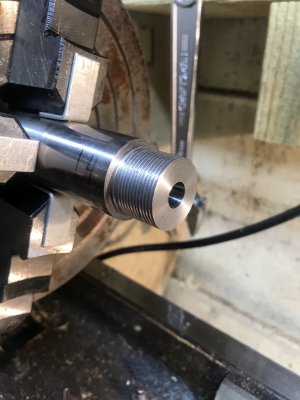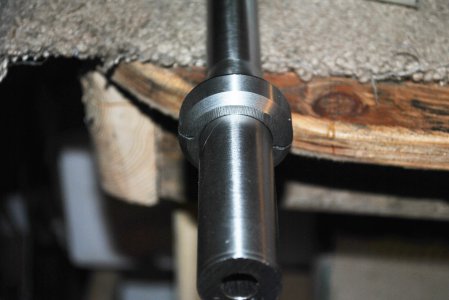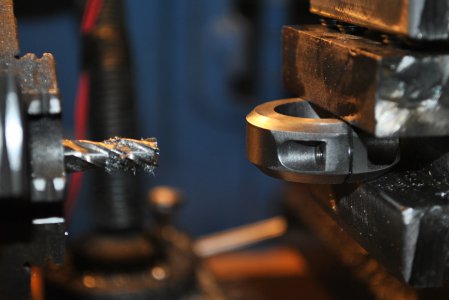- Joined
- Jul 21, 2020
- Messages
- 11
So many good thoughts above. Can't wait to dig into many of them. There was a question about putting the barrel in bind with the outboard spider. I am sure that I am putting the barrel in bind--likely a lot of bind. I have bent some L-shaped aluminum shims that I use to hold the barrel in the 4-jaw. The shims extend about 1/2 inch under the jaw and are clamped down on the barrel.
Adjusting concentricity with the outboard spider is absolutely putting the barrel in bind. I could shorten the part of the shim contacting the barrel and 4-jaw to lessen the bind but it seems like this method is always going to induce some bind.
With no machinist background, it is not immediately apparent why this might be bad to me. The barrel, even if in bind, is being held statically within the spindle. The bind seems like it would remain the same under threading and boring/chambering.
I do know that there is a lot to be said for letting something be where it wants to be (the opposite of bind) but, is bind bad in this case with regards to indirectly (using range rod) measuring concentricity?

Adjusting concentricity with the outboard spider is absolutely putting the barrel in bind. I could shorten the part of the shim contacting the barrel and 4-jaw to lessen the bind but it seems like this method is always going to induce some bind.
With no machinist background, it is not immediately apparent why this might be bad to me. The barrel, even if in bind, is being held statically within the spindle. The bind seems like it would remain the same under threading and boring/chambering.
I do know that there is a lot to be said for letting something be where it wants to be (the opposite of bind) but, is bind bad in this case with regards to indirectly (using range rod) measuring concentricity?




